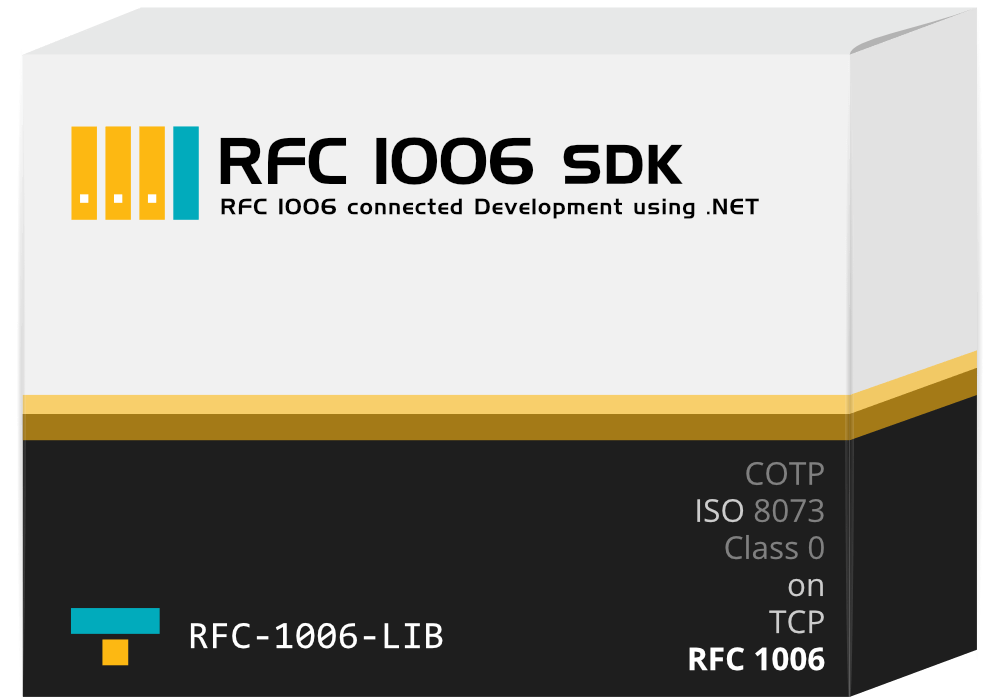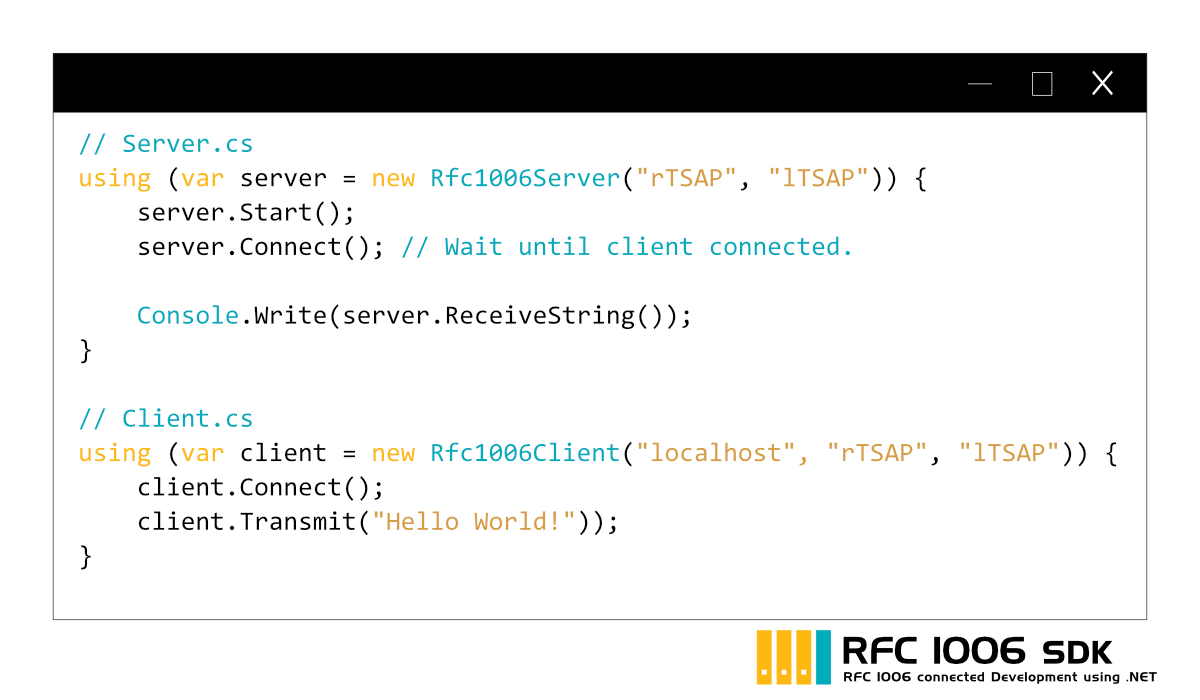RFC 1006 .NET SDK
RFC 1006 Client and Server Development with C#, VB.NET and C++/CLI

How to use
The RFC 1006 .NET SDK enables the development of RFC 1006 client and server applications according to RFC 1006 (ISO-on-TCP). To implement an RFC 1006 participant, the IP address and the local as well as remotely used TSAPs1 (see below) are sufficient. No licence from the IEEE/IET consortium and no other licence than the one for Traeger's SDK is required for development!

The exchange of the respective data works with DT packets (= data telegrams) generated independently by the SDK, in which the user-defined message is binary coded as a payload, partitioned according to RFC 1006 and transported. Any .NET language such as C#, VB.NET and C++/CLI can be used for programming. The interfaces themselves only differ in terms of the programming language used.
Advantages
- Free evaluation without registration
- Simple and fast development
- Industrial reliability
- API design according to Microsoft standards
- Royalty-free licences
- Qualified support
- Code samples included
- Rapid updates
- No additional software required
- Usable without licence from IEEE/IET consortium
Connectivity
- Access via TCP/IP with IP address or host name
- Use of user-defined TSAPs
- Clients as active participants
- Servers as passive participants
Undecided?
Your application is not a .NET application? The SDK is also available for C/C++, VB and Delphi: RFC 1006 SDK
Do you want to read or write data in the controller via RFC 1006? Then the SIMATIC S7 .NET SDK is the right product for you!
Looking for a "ready-to-use" RFC 1006 client? Only your telegrams are missing in our Industry 4.0 middleware: Codabix Industrial Edge
In just a few steps, the middleware can be set up as an RFC 1006 OPC UA gateway. In this way, process data can be exchanged quickly and easily between old and new participants.
Still undecided? We will be glad to advise you free of charge and without obligation: contact us now!
Licensing
Our license options – as individual as your projects. Design your software development the way that suits you best. Whether subscription or lifetime – our license models offer you complete freedom, first-class support and continuous updates. Whether one-off or flexible – find the perfect solution for your vision. Find out more about our license models.
- TSAP stands for Transport-Service-AccessPoint which are used by client and server as an "additional port". TSAPs are often referred to as local/remote or source/destination TSAP, depending on the participant. In this case, we also speak of LSAP and RSAP or SSAP and DSAP.↩
Features
- Individual data exchange with ...
RFC 1006 Client and server applications, e.g. with SIMATIC S7 controllers.
- Reading and writing of ...
Byte- and string-coded data
- Exchange of subscriber information such as ...
Location, designation and system time
- PDU-optimised accesses for ...
High-performance reading and writing of consistent data
- Termination detection to ensure ...
Constant connections through automatic reconstruction
- Supported languages
C#, VB.NET and C++/CLI
- Supported frameworks
.NET Framework 4.6+, .NET Standard 2.0+, .NET Core 3.1+, .NET 5.0+, .NET 6.0+ and .NET 8.0+
- Supported runtime environments
Microsoft's CLR, Mono, Xamarin, UWP and Unity
- Supported platforms
Windows, Linux, macOS, Android, iOS and Docker